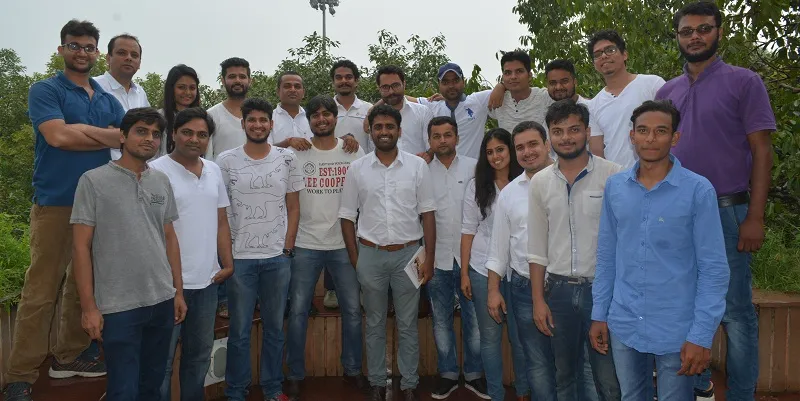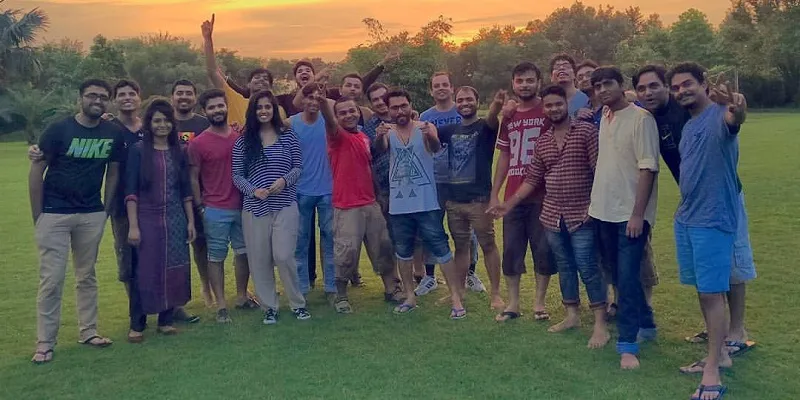i2e1: Satyam Darmora's gambit which delivered free internet in 4,000 locations
There is so much bandwidth that goes waste in India that by just tapping into a small portion available with retailers there can be free Internet delivered to those who truly need it.
The digital frontier is like a highway where a human's imagination can run wild. While it reminds us of the movie Tron, a majority of Indians still own push carts and carry a feature phone, or a smartphone but still don't know the power of the device and the information it can deliver to change their lives.
Take Chinnarayudu, for example. A farmer from Chittoor, he visits his children in Bengaluru, frequenting malls and restaurants, and uses a smartphone to watch videos shared by his extended family. Unfortunately for him, he is using 2G services and cannot download high definition videos and photos. Now, think of a scenario where he is sitting in a mall and the mall has more than 100GB of Wi-Fi spread across all the stores. Only 50 percent of the Wi-Fi is consumed by these retail outlets. Imagine if this bandwidth can be delivered to Chinnarayudu; he can not only use it to discover information, but targeted messages can be sent to his family members when they use the free Wi-Fi.
The winner, in this case, is the retailer, because it increases his footfall. Everyone in the mall can use this free Wi-Fi, and a limit can be set for the consumption of the bandwidth. But does this sound a bit far-fetched and undoable? If we have to go by what Delhi-based IIT incubated startup i2e1 is doing, it really isn't. The firm is doing algorithms of matchmaking with retailers and consumers across 4,000 locations in 52 cities. Not since Future Group's Kishore Biyani in 2003—who wanted to bring affordable retailing across the country—has someone thought of something as disruptive. So while the promise of Reliance Jio's free Internet slow disappears into the air, this model will remain for a long time to come.
The startup is the brainchild of 36-year-old Satyam Darmora, and five of his close associates who run the tech, analytics and business at the startup. The team includes Nishit Aggarwal, Ashutosh Mishra, Maanas Dwivedi, Gaurav Bansal and Anugrah Adams.

The business for the company has spread like wildfire in 15 months and has drawn a $500,000 investment from 3One4 Capital, growx Ventures and high net worth individuals.
In the beginning....
To understand Satyam's genius one must take a look at his past. He was born in the small town of Kedarnath where good roads and steady electricity was in short supply. Although his parents got him the best education, he had no idea what his purpose in life was. He knew he should write the IIT entrance exam only when a professor suggested it. "Lots of bright students did not take up IIT, because all they knew was to become an engineer; they did not know that there was such an institution as IIT," says Satyam, adding that the primary reason for this lack of information was because many students lacked access to an avenue to get that information. Even with the Internet being all-pervasive today information flow does not percolate to 70 percent of Indian society.
So when he graduated from IIT-Delhi in 2003, and then IIM-Bangalore in 2005, Satyam wanted to do things that could change the world. He started out at American Express and went straight to Japan for his first corporate assignment. He then returned to India, swapping his corporate career for a stint at Michael and Susan Dell foundation. For a good eight years, he worked in rural regions across the country trying to find solutions and interventions to educate the girl child. "I saw the problems head on. Most of them exist because people do not have information," says Darmora.
By early 2015 the proliferation of the Internet triggered the idea for i2e1. Most of the Wi-Fi resources are not consumed by corporations, and this became the beginning of something beautiful for Satyam, who sat down and began to conceive of a box that could free these unused communication resources and deliver to consumers across cities in every locality. The company was born in December 2015.
Immediately, he began to conceive of the business model too; apart from managing the Wi-Fi for these retailers, i2e1 would manage the marketing collateral for the retailers and convert them into footfalls for the retailers for Rs 7,000-20000 a year per location.
How does it work?
Once the retailer or real estate company contacts i2e1, the team comes in to understand the objective of the business to target consumers. The company then sets up its network and the consumers would be rationed bandwidth by i2e1 at the store or even outside. The company can also use CCTVs and connect them to the net, which they are using to create heat maps in retail stores and locations. They are working with a couple of real estate companies that are using their data generated from retailers to understand which regions would be best to buy properties for commercial and residential needs.
The complication lies in managing customer browsing habits, getting them hooked to the marketing collateral for footfalls, making sure the network is secure, and finally pushing personalised preferences. So the customer connects to an i2e1 network, registers with his mobile and enters an OTP to use the Wi-Fi. Once logged in, the number becomes a sort of loyalty code for the customer. From then on the customer can get personalised messages from the retailer in every location. So Chinnarayudu can get marketing information in his native language, and what more he can browse the Internet for information.
The retailer pays a yearly cost to i2e1, and also for the uptick in sales. The services offered by the company include data analytics and, the company claims to have increased footfalls by 20 percent and 27 percent increase in revenues. It has signed up 700 individual retailers so far. "We can tell retailers which floor and aisle consumers visit the most,” Satyam says.
Currently, the startup's revenues are more than Rs 2 crore. It will be scaling up revenues as it ties up with larger brands. The firm began with an investment of Rs 30 lakh.
The retail industry is worth $600 billion, according to Ernst & Young. Only 10 percent of the industry is organised, serving around 100 million consumers. So why not free up their Internet resources for information-hungry individuals, or at least get them to using the Internet?
But will it serve the concept of making internet available for free for everyone? Eventually, Satyam says he can work across businesses in various regions to free up Wi-Fi. The model can also be successfully applied in government-run programmes across the country. "Retailers use our services because we show them that for every rupee invested, they get an uptick in sales," Satyam explains.
Investors chose to invest in the company because of the machine learning complexity that they were solving.
"Startups that partner and increase the value of the client's business, and not just sell technology, will succeed," says Kishore Biyani, Chairman of Future Group in India.

Are there others doing it? Yes, there is competition close on the heels in the form of a company called Bezirk, the Bosch-funded startup. They have been funded up to $4 million by the German manufacturing behemoth. The model is similar with subtle differences, where Bezirk will make retailers invest in WiFi hot spot points across the store and will use software programmes to push promotions for consumers and present analytics for clients. The Bezirk model works only inside the store. But to their credit, this company has expanded in the US with large retailers. They are at their core a team of engineers trying to use machine learning algorithms to make sense of customer targeting complexity. "The engineering can be great. But a business succeeds when you can manage multiple locations across the country,” says Hemanth S M, Co-founder of Bezirk.
Whether the objective is to provide free Internet for the people or make life easier for consumers and consumer retail companies there is no doubt that India has some major B2B businesses cropping up. Now Satyam has hit the nail on the head, with this idea for effective use of the Internet; all he has to do is increase revenues and make retailers across the globe use his technology so that it is information to everyone—i2e1—after all!







